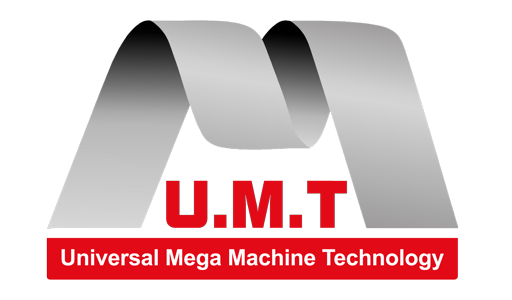Metal welding and cutting robot
Introduction
Robotic 3D Laser Cutting Technology
Robotic 3D laser cutting is a sophisticated metal cutting technique designed for processing three-dimensional profiles, allowing for flexible, multi-dimensional, and multi-angle cutting. This technology typically employs a six-axis industrial robot equipped with a 3D laser cutting head mounted at the end of the robot arm.
Request more information
overview
Robotic 3D Laser Cutting Technology
The versatility of robotic 3D laser cutting makes it ideal for a range of applications, including the fabrication of complex 3D curved metal parts, metal pipes, automotive components, kitchen appliances, and electronic enclosures. Its ability to perform intricate cuts enables manufacturers to create highly precise and customized designs that would be challenging to achieve with traditional cutting methods.
The structure of a 3D robotic laser cutting system resembles a crane, providing ample space and mobility for the cutting arm. This advanced technology enables the cutting arm to move with exceptional flexibility across six axes, allowing for fully controlled motion and the capability to cut in a full 360-degree radius.
In addition to its precision and adaptability, robotic 3D laser cutting systems are often integrated with advanced software for enhanced programming and automation, further increasing efficiency in the production process. As industries continue to embrace automation, robotic 3D laser cutting represents a significant leap forward in manufacturing capabilities, improving overall productivity while reducing waste and production costs.
Welding Robots
The oil & gas industry in the GCC region operates under intense pressure — from tight deadlines and international compliance standards to the demand for consistent, high-quality welding results.
Robotic welding systems are now transforming fabrication processes across the sector, delivering the precision, speed, and reliability required for mission-critical components such as pressure vessels, skids, pipeline spools, and structural modules.
🔧 Key Advantages of Robotic Welding for Oil & Gas Applications:
- High-precision welding for complex geometries and high-spec materials
- Zero-downtime performance for critical-path production schedules
- Full compliance with ASME, API, and other global standards
- Automated tracking and traceability for certified weld quality
- Improved HSE compliance by minimizing human exposure to heat and fumes
- Reduced dependency on skilled welders and more predictable workflows
Whether you’re fabricating offshore platforms, onshore modules, or pipeline assemblies, robotic welding can significantly enhance both quality and throughput.
Features
Main Components
Welding and cutting robots are complex systems designed to enhance efficiency, precision, and automation in industrial processes. Each component plays a crucial role in ensuring the robot operates optimally. Below are the key components:
P-Robot can be applied indifferently to standard P1, PX, P2, or P4 panel benders. P-Robot can feature loading/unloading only, can be equipped with devices for automatic movement of the pallets, or can provide third-party integrations – for example with work centers for labeling, laser marking, riveting, welding, and corner forming.
- Collimation Lens or Collimator: This component focuses the laser beam to maintain its quality over distance, ensuring precision during cutting.
- Focusing Lens or Protective Lens: Further refines the laser beam and protects the cutting head from debris and contamination.
- Nozzle: Directs the laser onto the material being cut, sometimes incorporating assist gases to enhance the cutting process.
- The brain of the robot, which includes:
- Control Unit: Oversees all operations and coordinates the robot’s movements.
- Drives: Enable precise movement and positioning of robot axes.
- Remote Control: Allows operators to manage the robot from a distance for enhanced safety and convenience.
- Chiller: Cools the cutting head and laser source to prevent overheating during extended operations.
- Electrical Panel Cooler: Maintains optimal temperatures within the electrical panel to protect internal components from heat damage.

- UPS Stabilizer: Provides uninterruptible power supply to ensure the robot operates smoothly during power fluctuations.
- Voltage Stabilizer: Protects the robot’s components from voltage spikes and variations.
- Offers flexibility and precision in movement with various configurations:
- 6 Axes: Standard configurations for basic robotic tasks.
- 7 Axes: Adds an extra degree of freedom for more complex movements.
- 8 Axes: Provides maximum flexibility, allowing for intricate tasks and improved reach.
- Payload Range: Typically supports loads between 16 to 30 kg, suitable for handling various welding and cutting tools.
- Arm Length Range: Adjustable reach between 1600 mm and 4500 mm, enabling versatility in tackling different project sizes.
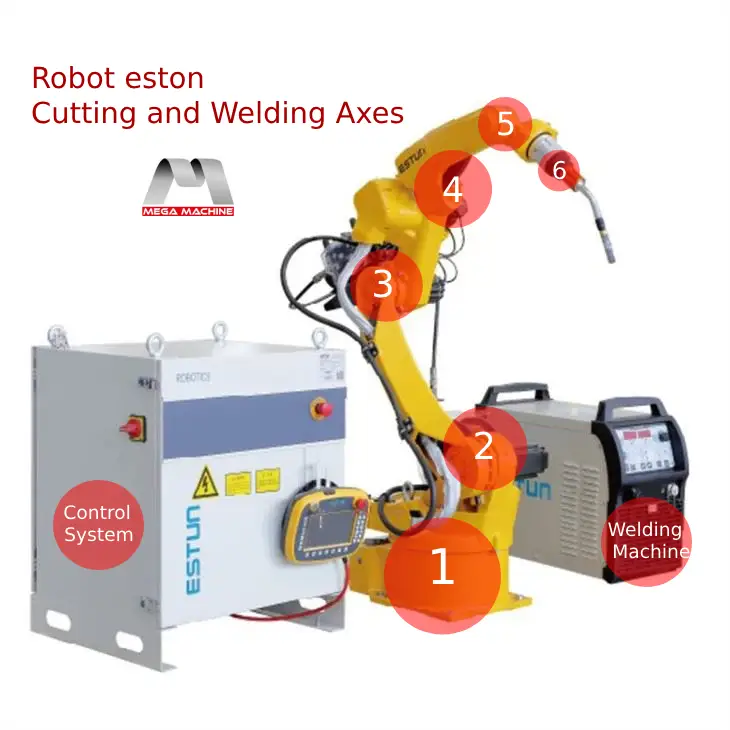
Request more information
Applications
The process reduces
inconsistent welds compared to manual welding —many companies investing in welding automation have benefited from expanding in-house capability and reducing the need to outsource.
Aerospace Components
In the aerospace sector, robotic laser cutting is used to create complex components with precise geometries. The exceptional precision and consistency of this process ensures that critical parts adhere to precise specifications, enhancing the safety and reliability of the aircraft.
Automotive Parts
The automotive industry also benefits from robotic laser cutting, particularly in the production of custom parts and prototypes. The technology enables fast and precise cutting of complex shapes, facilitating rapid prototyping and customization, which speeds up the design and development process.
Medical Equipment
Medical devices often require precise cutting and complex features, making robotic laser cutting an ideal solution. This technology allows for the production of complex implants, surgical instruments, and various medical devices with unparalleled precision.
Military Equipment
Of course, speed and precision are required when mass-producing military equipment. In addition, the presence of robots in the production of military supplies reduces the need for a secure workforce and outsourcing.
Home Appliances
Due to the increasing demand for luxury and professional appliances, laser cutting can be used to produce home appliances such as gas hoods, tables, chairs, and internal parts of home appliances in high-production factories.
Electrical appliances and computer and mobile parts
The versatility of laser cutting robot heads is very high and can be used in the production of small and complex parts of electronic appliances.
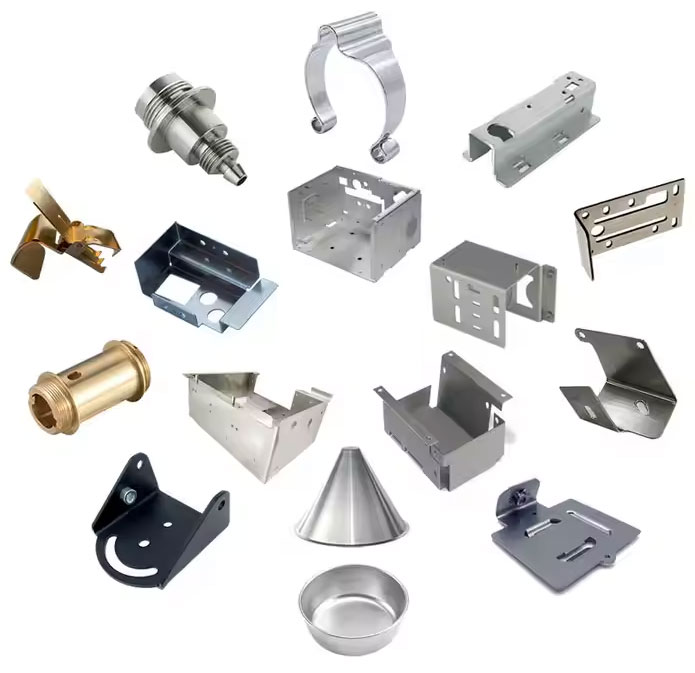
Software
Industrial Robot Software
A specialized software package designed for programming and controlling robotic movements is provided with the robot, programmed by the robot manufacturer. This program ensures accuracy in operations and simplifies workflow management. Mega Machine specialists are proficient in this software and provide the necessary training to the relevant employees of the purchasing company, and its support will continue after the robot is purchased.
Get The Catalog
Download the full robotic welding and cutting systems catalog and explore all models, specifications, and integration options in one place.
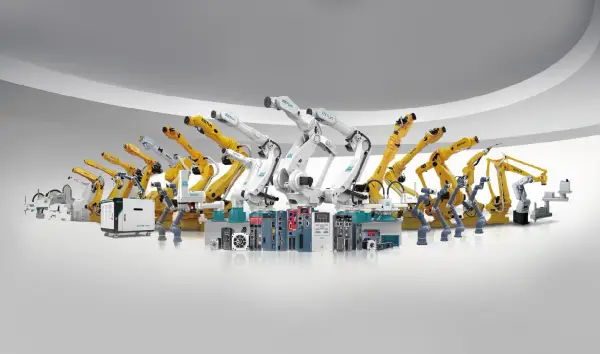
Estun robot
Estun Robotics Estun Robotics Leading the IndustryEstun’s commitment to innovation has made it a top player in the robotics field,

panel benders
panel benders and Robotic System Panel bending machine with robot and set upThe panel bender is a machine that operates similarly to
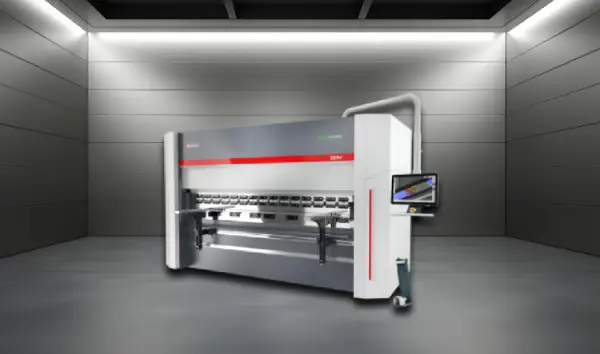
PRESS BRAKE MACHINE
Revolutionize Your Bending Process Robotic Press Brake Solutions Discover how robotic integration can reshape your metalworking production.Press brakes are essential

